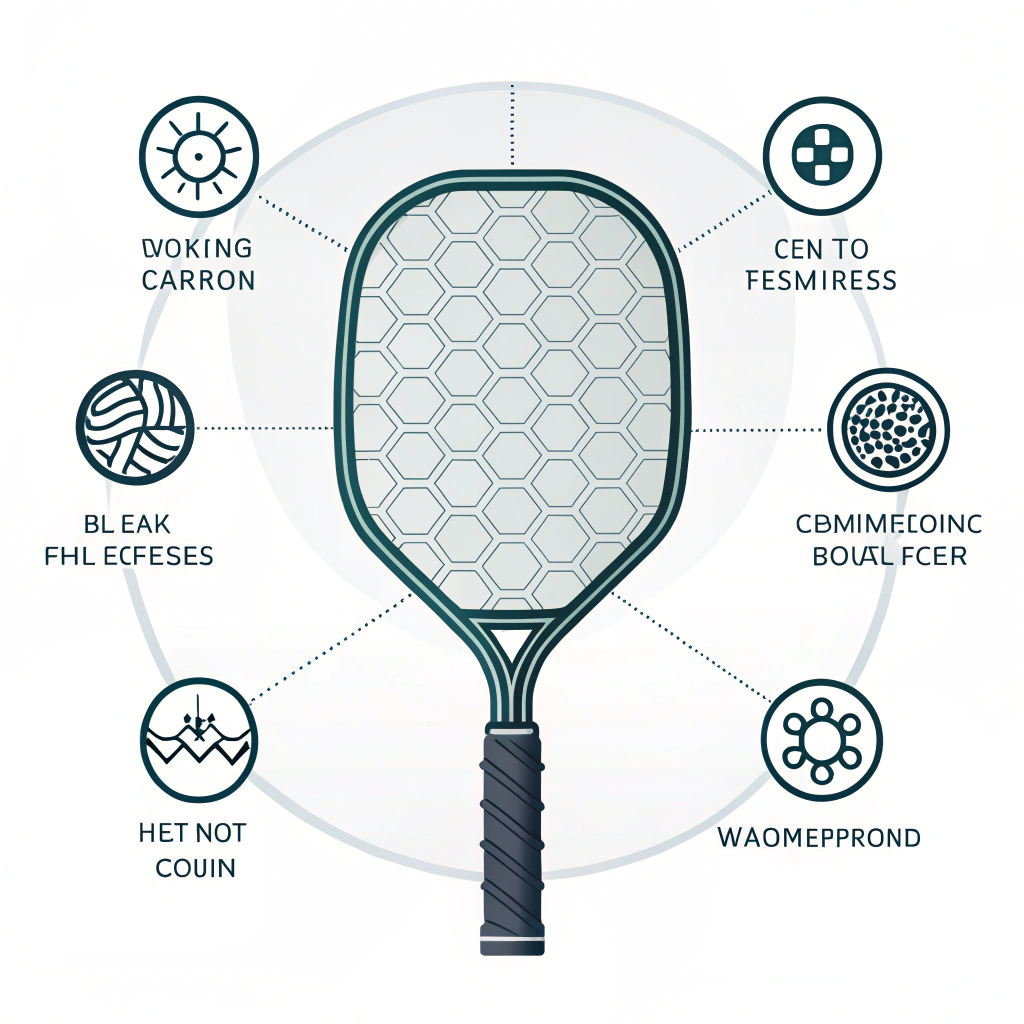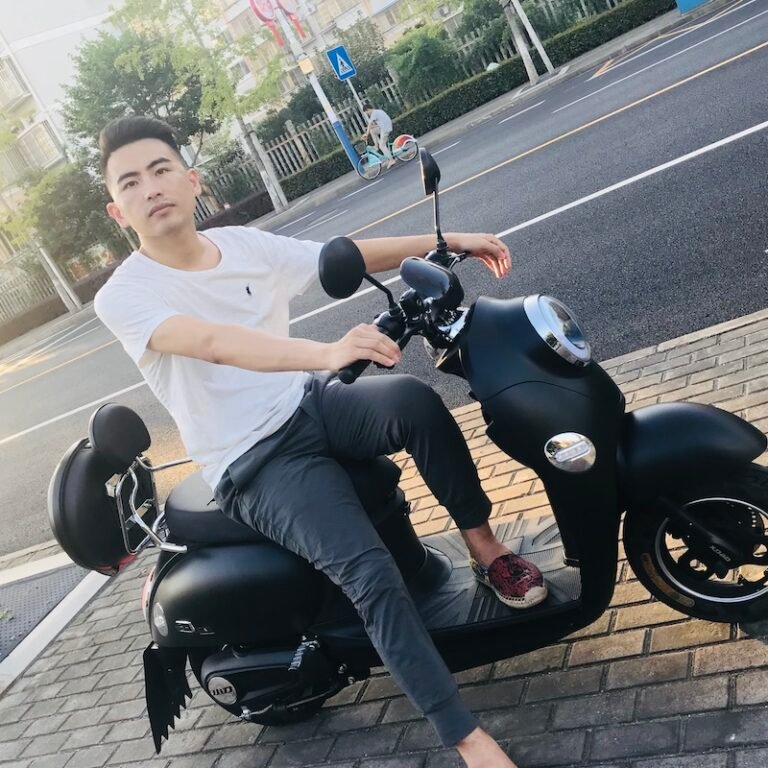Our advanced manufacturing techniques ensure that NEX Pickleball produces high-performance paddles designed for durability, precision, and competitive play. In brief, our paddles leverage the best materials—such as carbon fiber1, fiberglass, and composite cores—and cutting-edge production processes including hot pressing2, cold pressing3, and thermoforming4 to deliver products that meet the rigorous requirements of professional play and bulk distribution.
In today’s rapidly evolving sports equipment market, decision-makers face a complex array of options when selecting pickleball paddles for competitive play. With an increasing focus on technology, materials, and production methods, it is essential to understand the distinct differences between paddle models to make an informed bulk purchasing decision. At NEX Pickleball, we combine our years of experience with innovative manufacturing practices to provide products that excel in performance, durability, and design precision.
One of the key factors in choosing the right pickleball paddle is understanding the materials used. In modern high-performance paddles, the most common materials include various types of carbon fiber1 (appearing again without additional markup), fiberglass, and composite reinforcements. Below is a detailed comparison of these materials:
| Material Type | Key Features | Advantages | Ideal For |
|---|---|---|---|
| 3K Carbon Fiber | Strength and flexibility | High rebound force, excellent durability | Competitive play needing power and control |
| 12K Carbon Fiber5 | High thread density | Smoother surface, greater hardness | Extreme impact resistance and precision |
| T300 Carbon Fiber | Outstanding tensile strength | Balanced strength and lightweight performance | Players needing power without extra weight |
| E-Glass Fiberglass | Excellent elasticity and tensile strength | Wider sweet spot, enhanced ball control | Recreational players seeking balance |
| Composite (Carbon Fiber + Fiberglass) | Combination of materials | Blends strength, lightness, and flexibility | Players wanting both power and control |
| Bamboo Core Composite | Natural lightweight but impact resistant | Clear hitting feel, enduring play integrity | Long-lasting play and unique design aesthetics |
| Honeycomb Core Variants (Nomex, Aluminum, Polymer) | Varies by type (e.g., shock absorption, balance) | Offers tailored experiences in vibration control, durability, and grip | Custom paddle design for different skill levels |
Each material type provides a unique blend of performance characteristics. For instance, 12K carbon fiber is best suited for paddles built for high-impact competitive scenarios, whereas fiberglass paddles tend to offer better ball control and flexibility, appealing especially to new and recreational players.
The production process is as crucial as material selection because it defines the paddle’s structural integrity, feel, and overall performance. At NEX Pickleball, we employ three advanced techniques:
This process uses heat and pressure to mold paddle components into a unified structure.
-
Advantages:
- High Efficiency: Ideal for large-scale manufacturing.
- Enhanced Durability: Provides excellent impact resistance.
- Structural Integrity: Results in paddles that hold up under competitive stress.
-
Disadvantages:
- Material Modification: The heat may alter some inherent material properties.
- High Initial Investment: Requires substantial equipment and energy consumption.
Cold pressing shapes the paddle material at room temperature by applying calibrated mechanical pressure.
-
Advantages:
- Precision: Allows for detailed control over paddle thickness and structure.
- Enhanced Feel: Preserves the material’s original characteristics, offering better hit response.
- Control and Flexibility: Ideal for paddles demanding fine-tuned performance.
-
Disadvantages:
- Time-Consuming: Production cycles are longer, reducing throughput.
- Equipment Demands: Requires meticulous pressure control, favoring high-precision machinery.
Thermoforming involves heating materials to a softened state and then forming them with specific molds.
-
Advantages:
- Complex Designs: Enables the creation of paddles with intricate surface patterns and nuanced material distribution.
- Stability: Maintains shape and performance consistency even with complex designs.
- Material Variety: Accommodates a broad range of high-performance materials.
-
Disadvantages:
- Longer Production Time: Not as time-efficient as hot pressing.
- Cost Intensive: Higher equipment investments are required for premium products.
Below is a summary table comparing these production methods:
| Production Process | Key Benefit | Main Drawback | Best Suited For |
|---|---|---|---|
| Hot Pressing | Fast production and durable outputs | Potential material property change | Large-scale, high-impact paddles |
| Cold Pressing | Precision control and superior feel | Slower production cycles | Custom designs and premium touch |
| Thermoforming | Intricate designs with precise material handling | Higher production time and cost | Premium paddles requiring detailed engineering |
Understanding these processes helps procurement specialists decide which method aligns with their market needs. For instance, if a distributor is targeting competitive markets where performance and durability are paramount, a paddle manufactured via hot pressing might be ideal. Conversely, if the market trends indicate a growing interest in custom, high-touch designs, cold pressing or thermoforming can offer unique advantages.
The ideal paddle balances its material qualities with the characteristics imparted by its production process. When evaluating options, consider the following:
-
Performance vs. Durability:
- Competitive Players: Typically demand high rebound force and minimal vibration. Paddles with 12K carbon fiber and hot pressing might provide the robustness needed.
- Recreational Players: Often prefer flexibility and enhanced ball feel. Here, fiberglass or a composite approach through cold pressing would be beneficial.
-
Customization and Brand Differentiation:
- Market differentiation can be achieved through custom paddle designs. Advanced manufacturing techniques allow for tailored paddle specifications—such as weight distribution and grip ergonomics—that appeal to diverse consumer segments.
- If your market includes professional teams, the ability to customize paddles for branding purposes and personalized performance characteristics can be a major competitive edge.
-
Cost vs. Value:
- While superior materials and innovative production processes may command a premium, they also deliver lasting value by reducing replacement frequency and enhancing player performance.
- Bulk buyers must balance the initial investment against long-term benefits, such as enhanced durability and customer satisfaction.
-
Technological Advancements:
- The continuous evolution in material science and production technologies requires staying informed about the latest trends. NEX Pickleball leverages new techniques like thermoforming to create paddles designed for the demands of modern play.
- Our approach ensures that every paddle maintains quality control, delivering consistency in performance regardless of production scale.
To further illustrate the decision-making process, here is an example of how material and process choices impact paddle performance:
| Scenario | Recommended Material | Production Process | Expected Outcome |
|---|---|---|---|
| High-Level Competitive Play | 12K Carbon Fiber | Hot Pressing | Superior impact resistance and rebound force |
| Custom Branding for Professional Teams | Carbon Fiber & Fiberglass Composite | Cold Pressing | Enhanced tactile feel with precise control |
| Recreational Market with Casual Play | E-Glass Fiberglass | Thermoforming (for design flexibility) | Wider sweet spot and greater grip comfort |
| Budget-Conscious Bulk Procurement | Bamboo Core Composite | Mixed Process (Optimized blend) | Lightweight design with considerable durability |
For product managers and procurement specialists looking to secure a competitive edge in the sports equipment market, consider the following actionable strategies:
- Stay Updated: Regularly review trends in materials and production techniques. Innovative developments, such as improvements in T300 carbon fiber or advancements in thermoforming, can offer significant performance gains.
- Evaluate Real-World Performance: Beyond technical specifications, real-world testing and quality control are imperative. Piloting a small order can help assess the paddle’s performance in competitive settings.
- Leverage Customization: Use the option of custom paddle designs to cater to niche markets or regional preferences. Customization allows for differentiation that can set your distribution portfolio apart.
- Balance Cost and Quality: Analyze the total cost of ownership. Although premium materials and processes might have a higher upfront cost, their longer lifespan and superior performance often justify the initial investment.
- Partner with Industry Leaders: Align with manufacturers like NEX Pickleball who possess the expertise and innovation to produce paddles that meet the latest industry standards and customer expectations.
Ultimately, the decision to invest in a particular paddle model should be informed both by detailed technical insights and by the specific needs of the target market. Our comprehensive approach ensures that each paddle not only meets rigorous performance criteria but also offers a competitive value proposition for B2B partners.
In conclusion, selecting the right pickleball paddle for bulk procurement involves careful analysis of both material composition and production processes. At NEX Pickleball, our commitment to integrating advanced technologies with premium materials ensures that our products consistently deliver the performance, durability, and value that competitive players and distributors expect. By aligning your procurement strategy with these insights, you can confidently offer a product that stands out in a rapidly evolving market.
Q: What is the best pickleball paddle in 2025?
A: The best pickleball paddles in 2025 are those that combine high-performance materials, such as advanced carbon fiber1 variants and optimized production techniques like hot pressing, ensuring durability and precision for competitive play.
Q: What pickleball paddle do the pros use the most?
A: Many professionals favor paddles that utilize premium materials like 12K carbon fiber or composite designs that offer a balance of control and power. Brands like JOOLA, Franklin, and Selkirk are popular among pros due to their focus on specific performance features tailored to competitive needs.
Q: Is Joola better than Selkirk?
A: The choice between JOOLA and Selkirk depends on individual performance priorities. While Selkirk emphasizes durability and advanced material composition, JOOLA is often noted for its ergonomic design and aerodynamics, offering distinct benefits in terms of speed and spin.
-
carbon fiber: Click here to read more about the advanced properties of carbon fiber, including its role in high-performance applications and benefits in B2B procurement. ↩ ↩2 ↩3
-
hot pressing: Click here to understand the hot pressing process, including its operational advantages for large-scale production and durability benefits. ↩
-
cold pressing: Click here to explore the cold pressing method, highlighting its precision and effects on product quality in manufacturing environments. ↩
-
thermoforming: Click here for insights into thermoforming, detailing how this process enables complex designs and maintains material consistency. ↩
-
12K carbon fiber: Click here to learn about 12K carbon fiber variants, explaining their unique properties and performance differences compared to other carbon fiber types. ↩







